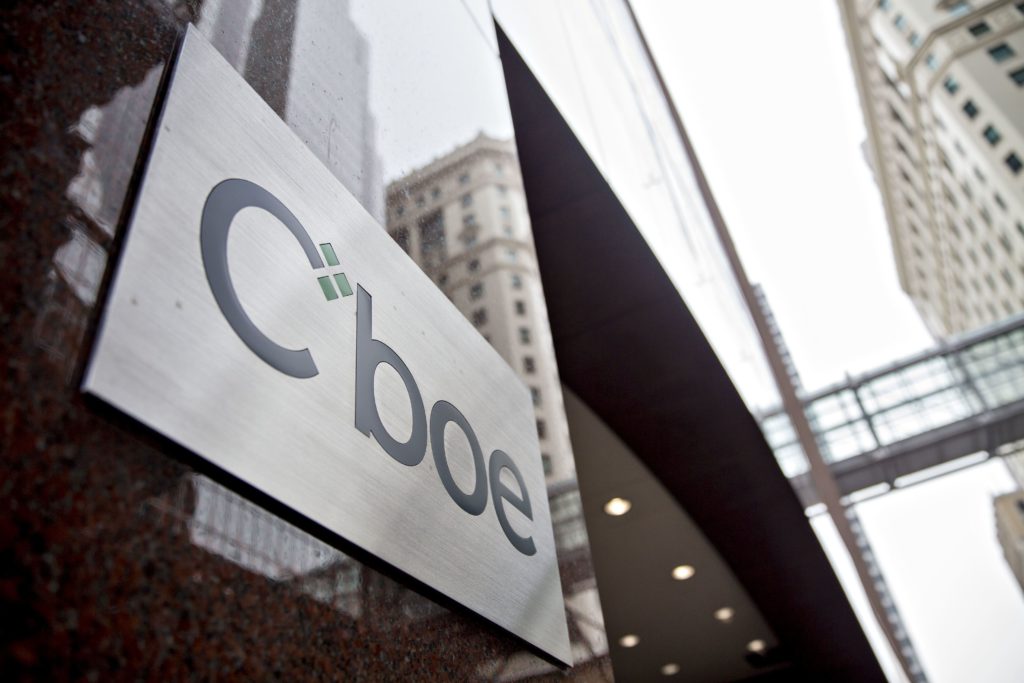(Bloomberg) — Cboe Global Markets Inc. is returning to its roots in Chicago’s financial district with the opening of a new trading floor.
The company moved its Cboe Options Exchange into a remodeled space in the Chicago Board of Trade building.
The 40,000-square-foot (3,716-square-meter) space, which opens Monday, gives market participants updated equipment and additional physical space to execute trades in the options market.
“The move is not new so much as it’s a continuation of our efforts to answer customer demand for physical presence, which has grown,” Chief Executive Officer Ed Tilly said in an interview.
“We would not be opening a trading floor if a customer had no utility for this.”
Few exchanges have continued pit trading, as hand signals and verbal communication transition to electronic systems.
Still, floor trading creates iconic imagery that can be used as a marketing tool, and the physical practice remains useful for executing larger orders. The New York Stock Exchange still maintains its floor, a historic landmark, in the financial district in New York City, while Nasdaq Inc.
and others operate without a physical trading space.
Investors are able to choose how they route their orders, either electronically or through a broker-dealer who stands on the floor of an exchange such as Cboe.
For more complex orders, most investors prefer “face-to-face, pit-style trading” for better price and execution in options, Tilly said.
Cboe, previously known as the Chicago Board Options Exchange, continues to operate its equities and futures exchanges electronically.
The three additional options exchanges Cboe maintains are also all-electronic, meaning it doesn’t require a physical space or the so-called “open outcry system” in which orders are shouted and matched by brokers and market makers that occupy physical space in a building.
The company’s new trading floor was built to handle heavy volume in index options trades, while nearly all equity options trades are handled electronically.
The firm said it executed roughly 36% of its index options trades on the floor via open outcry, rather than automation, from January through the end of May.
Ring the Bell
Cboe’s new space is home to around 120 trading booths and more than 330 kiosks where brokers and market makers can plug in their individual systems.
Like NYSE, CBOE’s floor also features a bell on a platform overlooking the trading floor that guests can ring at the start and close of the markets each day.
The four largest pits in the space will cover options trading in the S&P 500, Cboe Volatility Index, Russell 2000 Index and SPDR S&P 500 ETF Trust.
Still the vast majority of trades across the options market are done electronically.
The Chicago-based exchange operator has also been building its presence abroad, expanding in Europe, Asia and North America with the acquisition of Aequitas Innovations Inc., the parent of Toronto-based NEO Exchange.
It also added new asset classes with the purchase of cryptocurrency company Eris Digital Holdings earlier this year.
Cboe’s first trading floor dates back to CBOT’s former smoking lounge in the 1970s, a 4,000-square-foot space located on the fourth floor of the same building where the new trading floor is located, overlooking Chicago’s financial district.
The exchange later expanded its trading floor to the seventh floor because of growing demand for US listed options trading.
The company has since opened a new global headquarters in Chicago’s historic Old Post Office building, where Cboe’s corporate office remains.
(Corrects building name in second paragraph of story published Monday.)
More stories like this are available on bloomberg.com
©2022 Bloomberg L.P.











